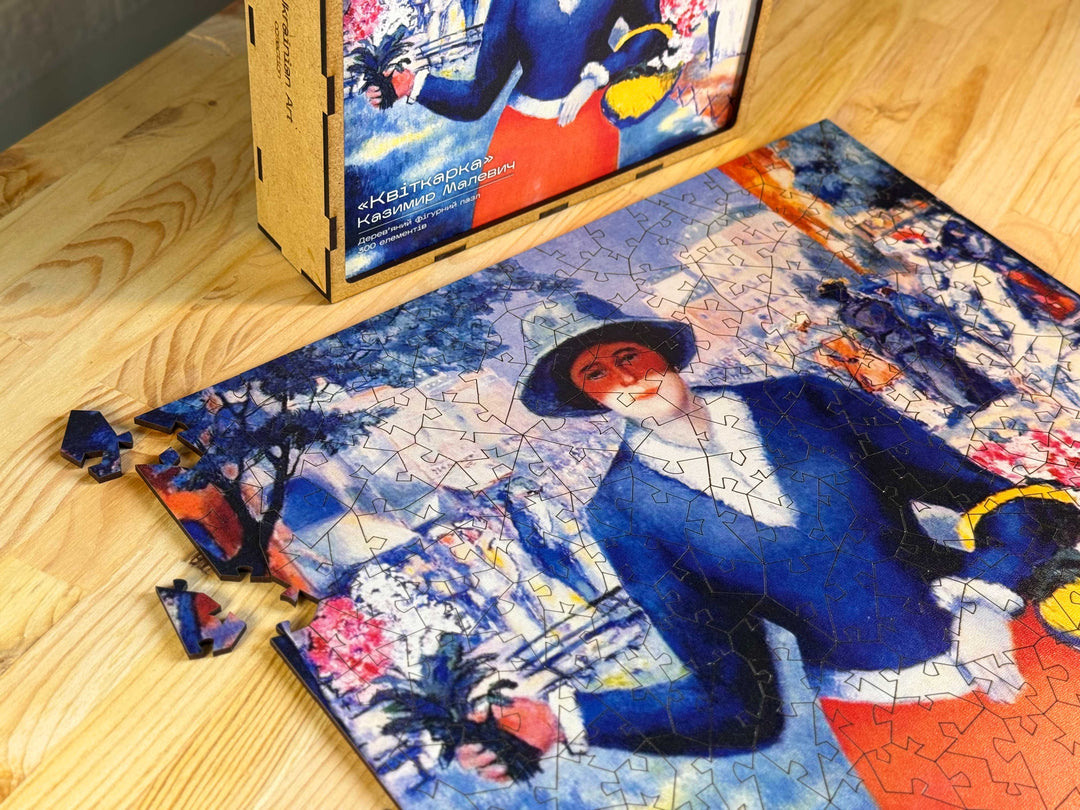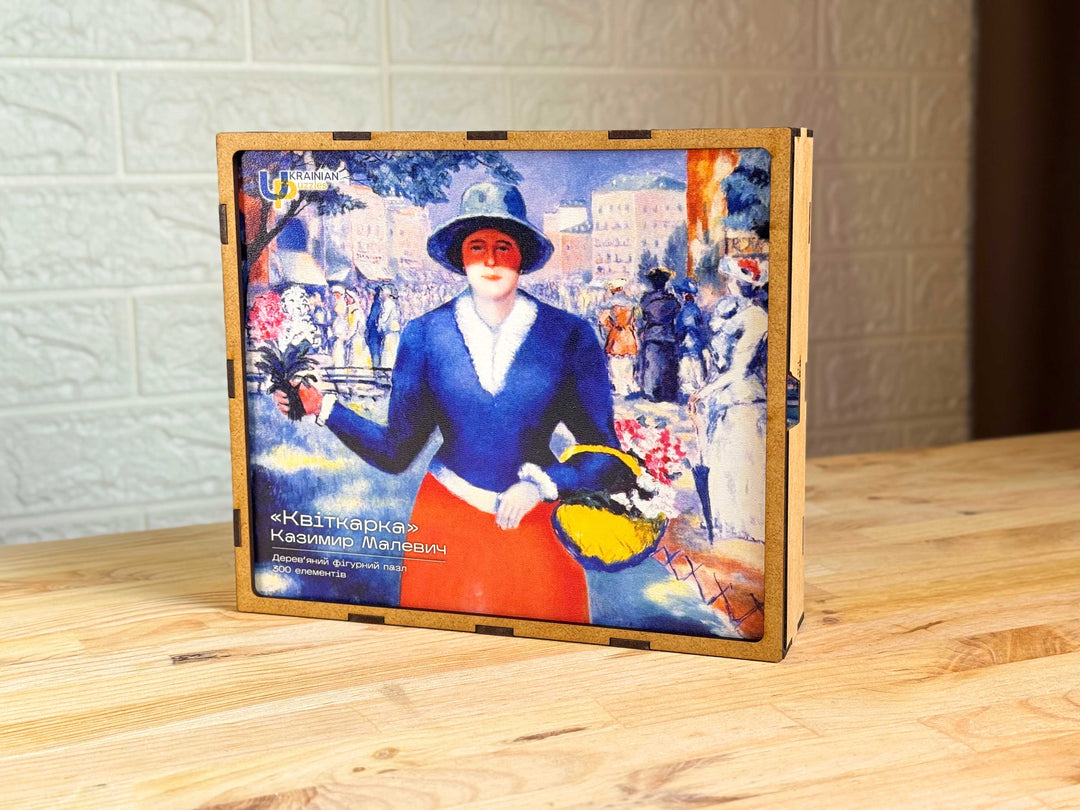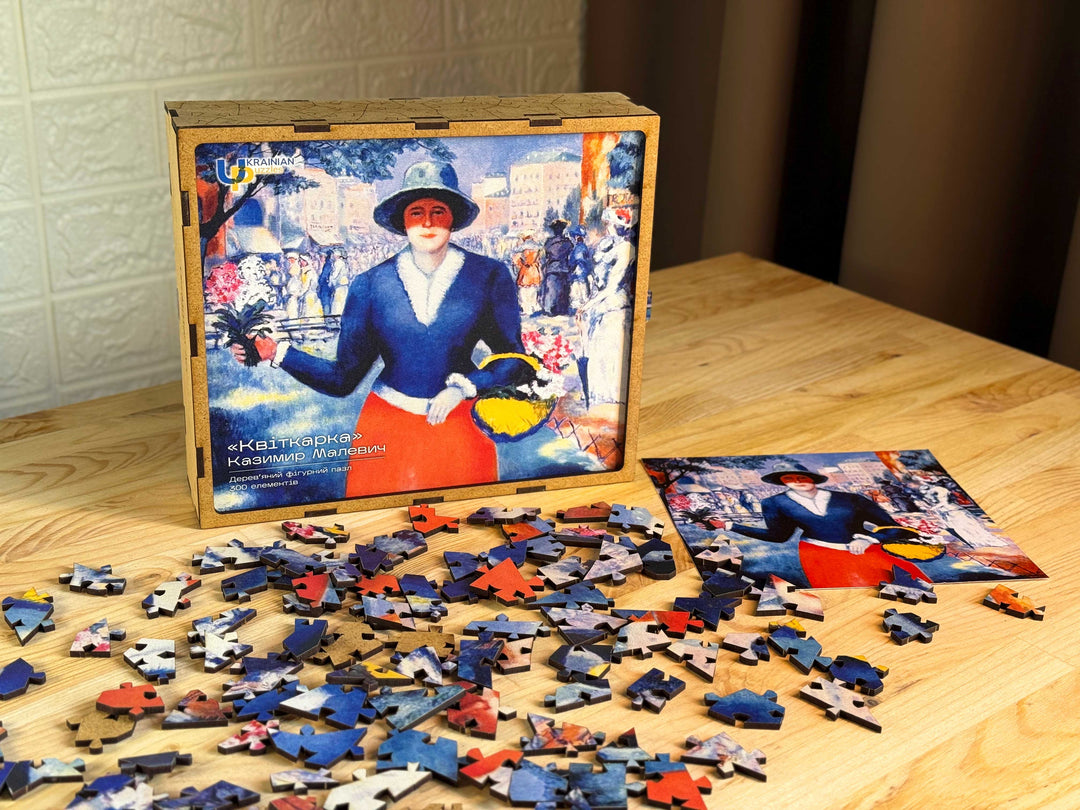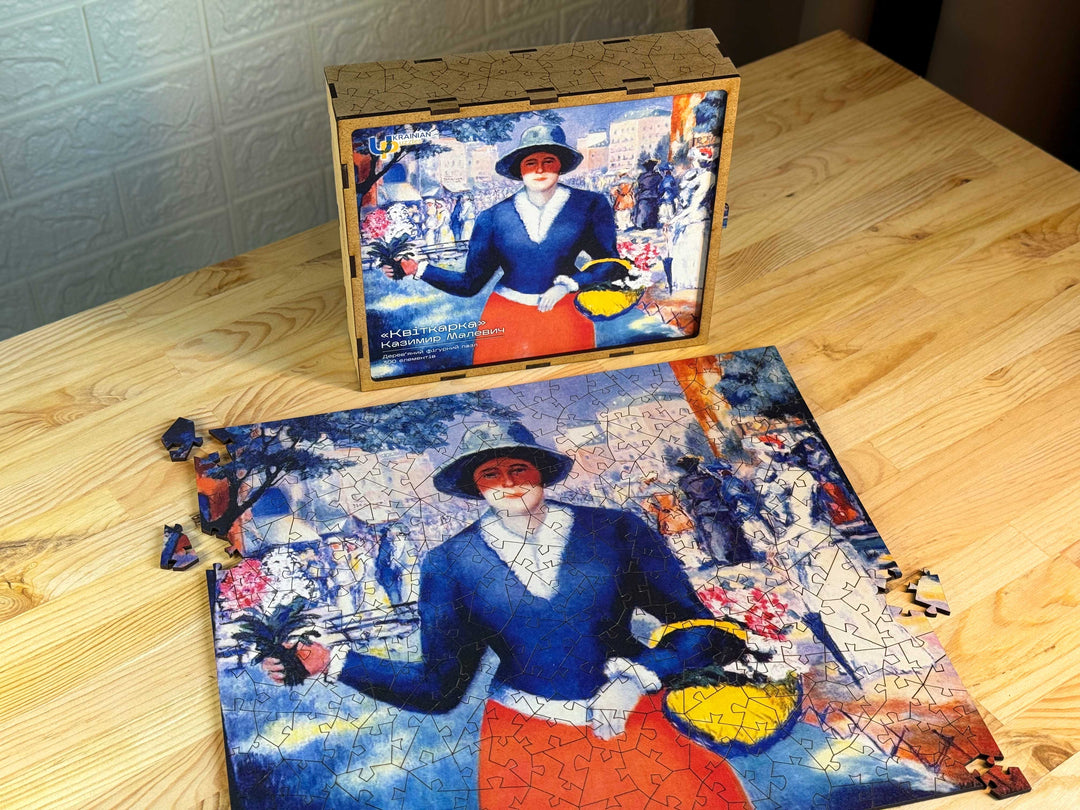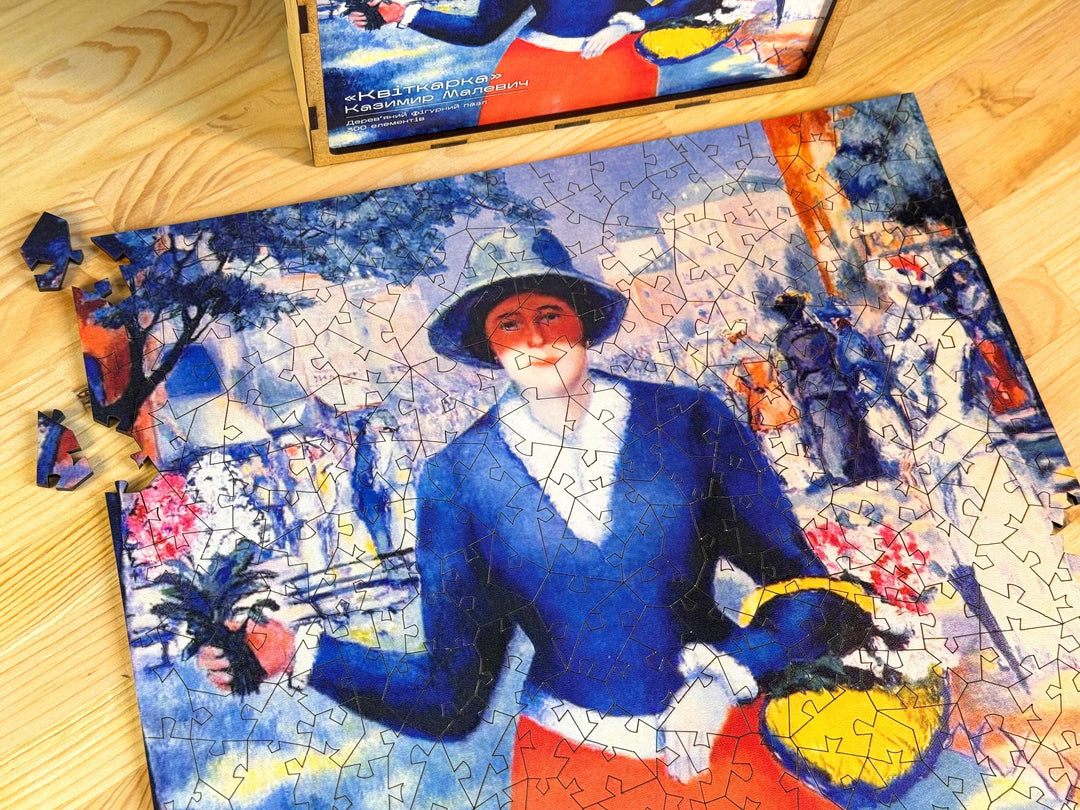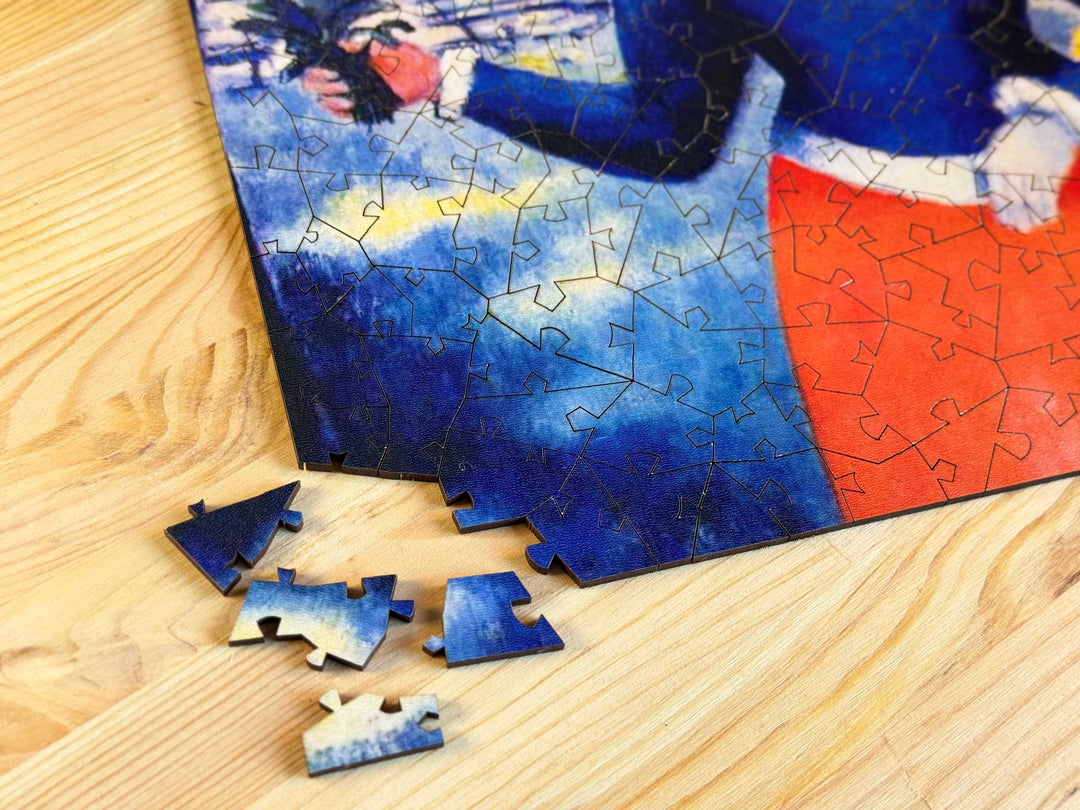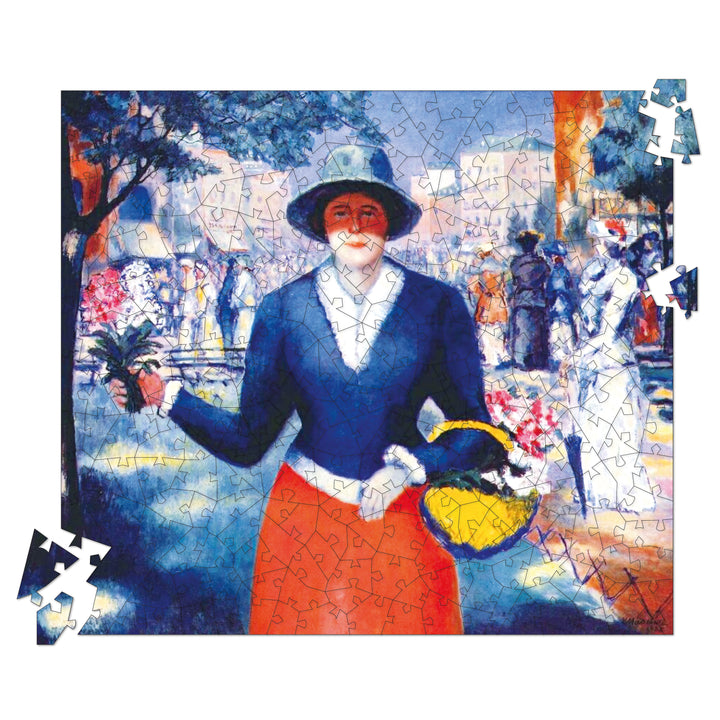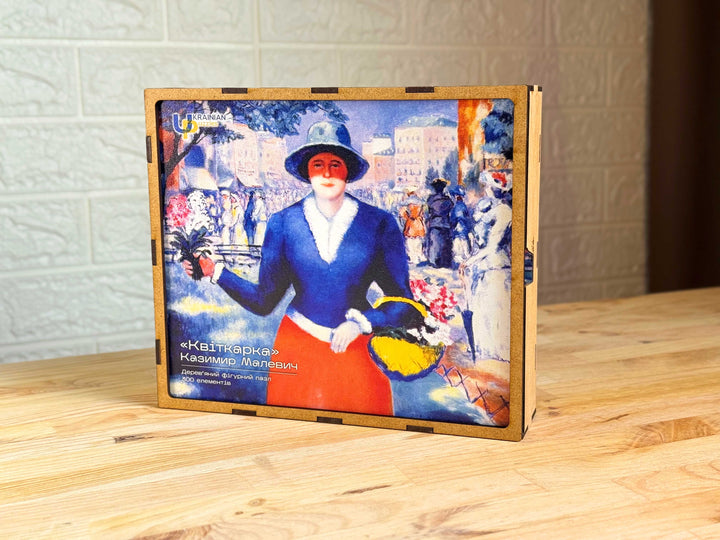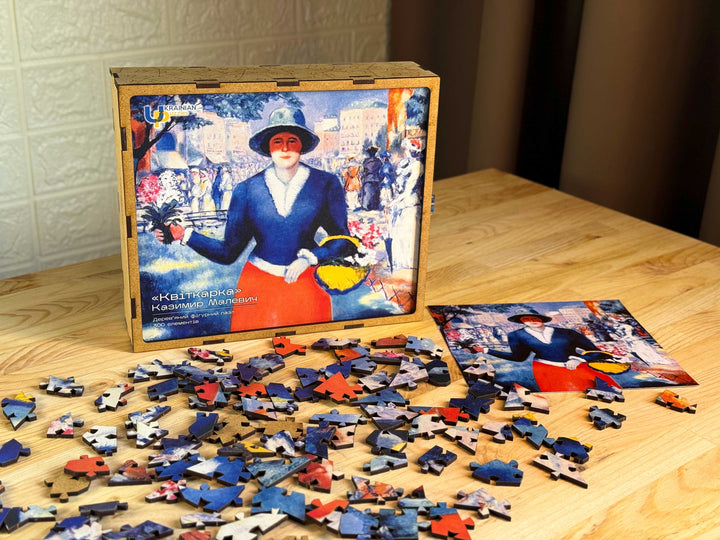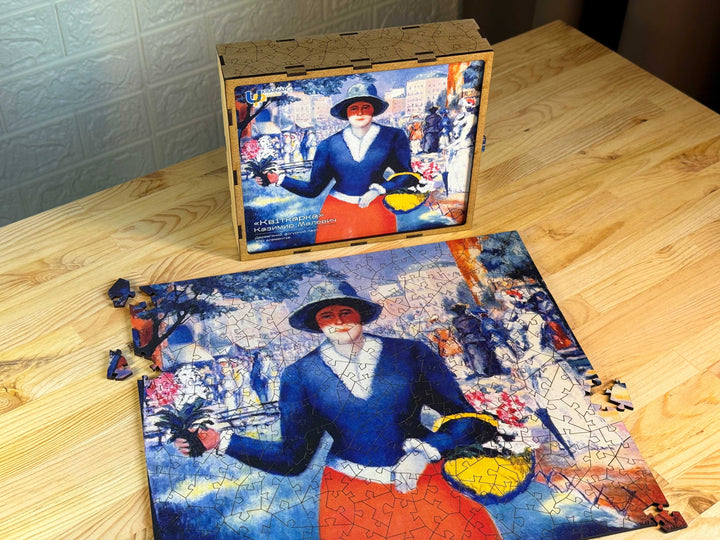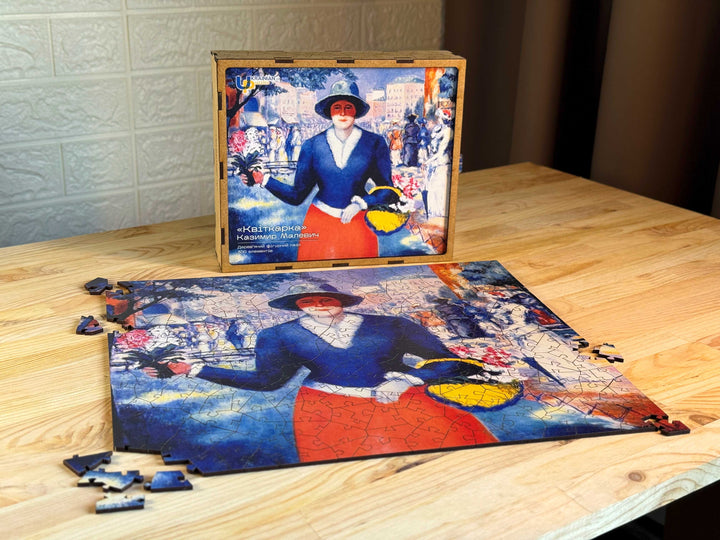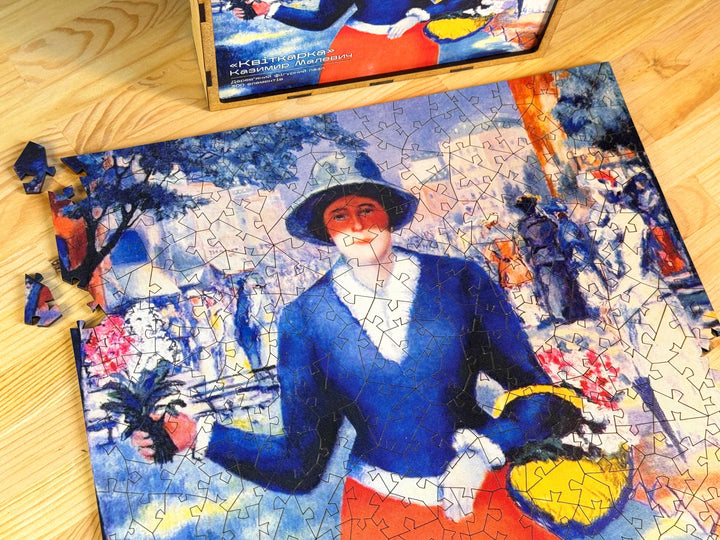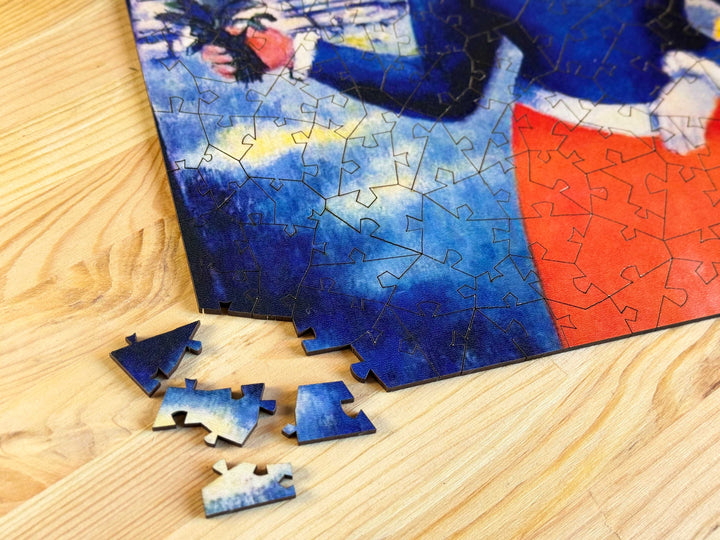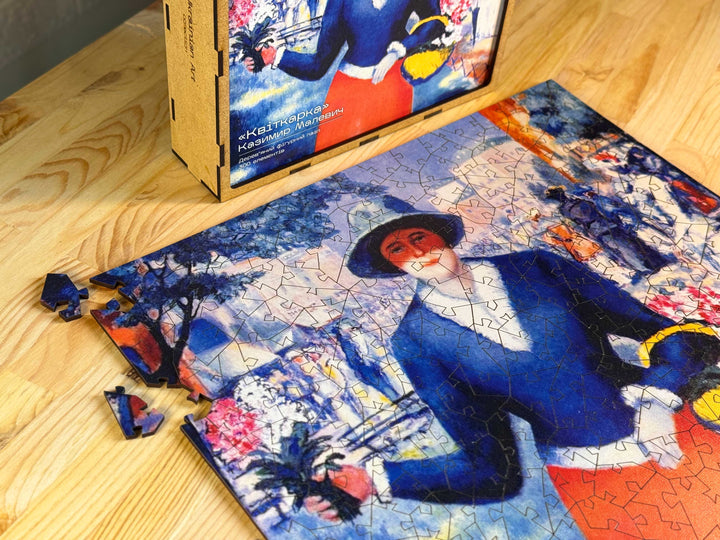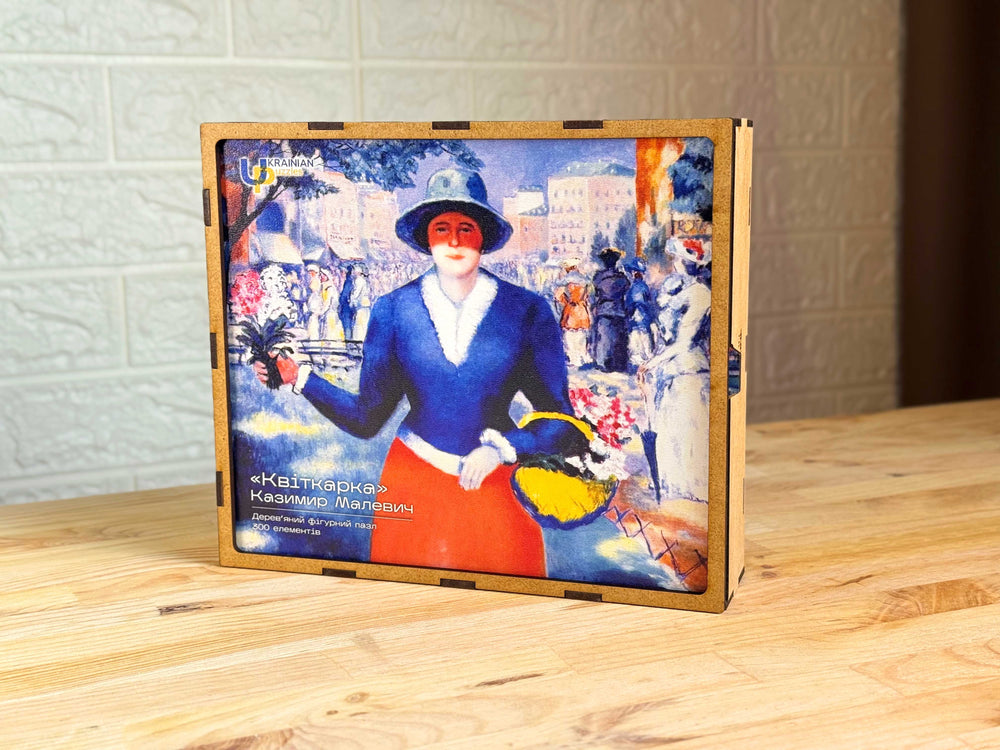Kazymyr Malevich (February 23, 1879 – May 15, 1935) was a Ukrainian artist, one of the most revolutionary figures in 20th-century world art, and the founder of Suprematism. He was born in Kyiv to a Polish-Belarusian family. According to Malevich's autobiography, his conscious development as an artist, as well as his sources of inspiration, were inextricably linked to Ukrainian folk art, especially icons, painted houses, and embroidery. He began his art education at the Kyiv Drawing School and was a student of Mykola Pymonenko. The painting "Flower Girl," reproduced in this puzzle, is an homage to Pymonenko’s painting, "Kyiv Flower Girl." Due to family circumstances, Malevich had to interrupt his studies in Kyiv and move to Kursk, and later to Moscow. In 1915, Malevich carried out an artistic revolution by presenting the world with the painting "Black Square" — a manifesto of Suprematism (from the Latin supremus — highest), which expressed absolute abstraction. Malevich hung "Black Square" in the pokut (the corner where icons are traditionally placed in Ukrainian homes).
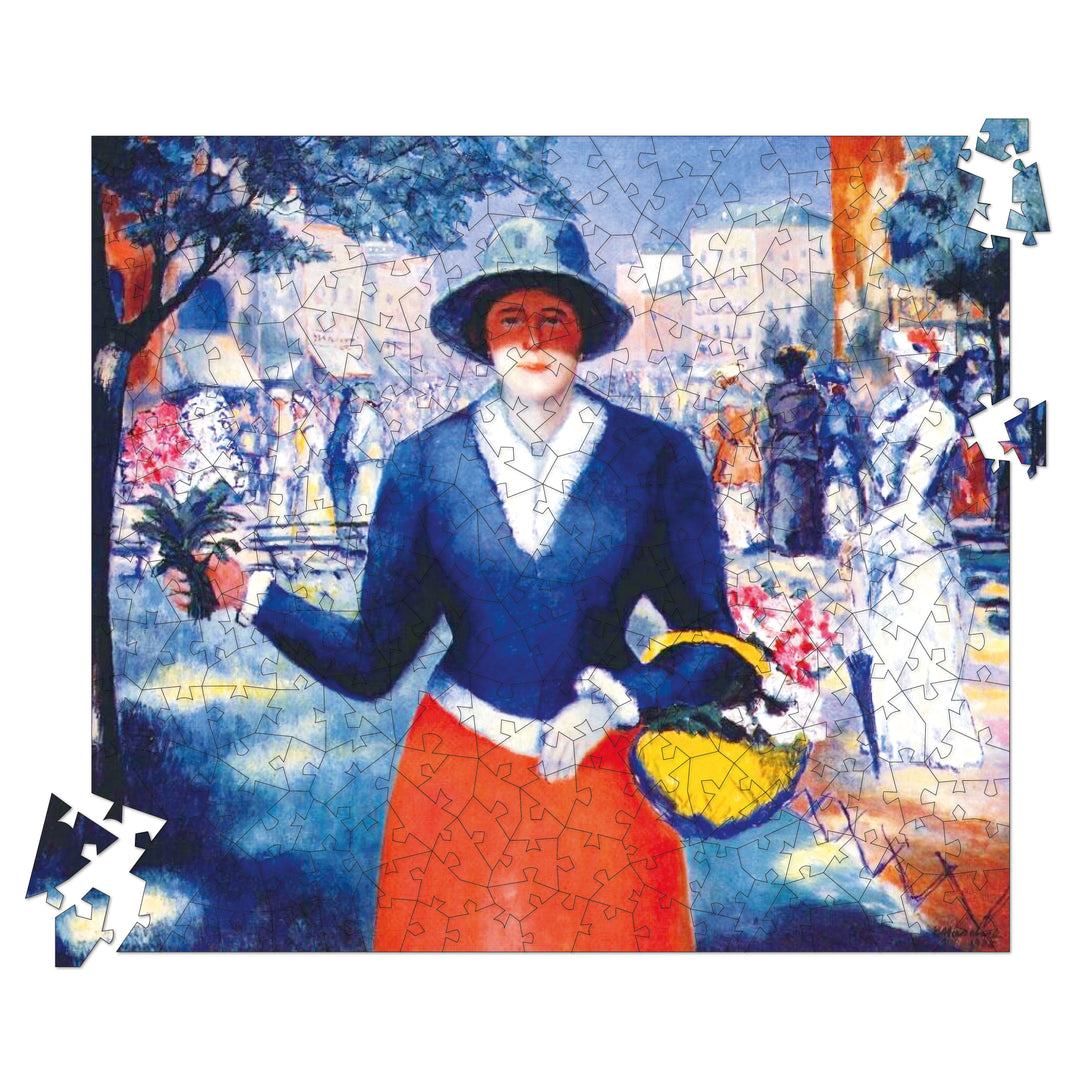
In 1927, Malevich, already world-famous, returned to Kyiv, taught at the Kyiv Art Institute, published articles in Ukrainian in art magazines, and actively created. His works from that period, featuring faceless and armless figures, reflect the tragedy of forced collectivization and the premonition of the Holodomor. The repressions did not spare Malevich. In 1930, he was summoned for questioning in Leningrad, arrested for three months, and subjected to torture, including injecting water into his urethra. This led to the development of a disease in Malevich that later progressed to oncology. Even after his release from arrest, Malevich was forbidden to leave the Leningrad region. He was never able to return to Ukraine. Malevich died in 1935. He was buried in a Suprematist coffin that the artist himself designed. He also bequeathed the construction of an architecton — a tall Suprematist structure with a telescope on top so that everyone could contemplate the sky — at his grave, but the will was not fulfilled. Malevich’s grave was leveled. Initially, it became a collective farm field, and now a residential complex has been built over the burial site.
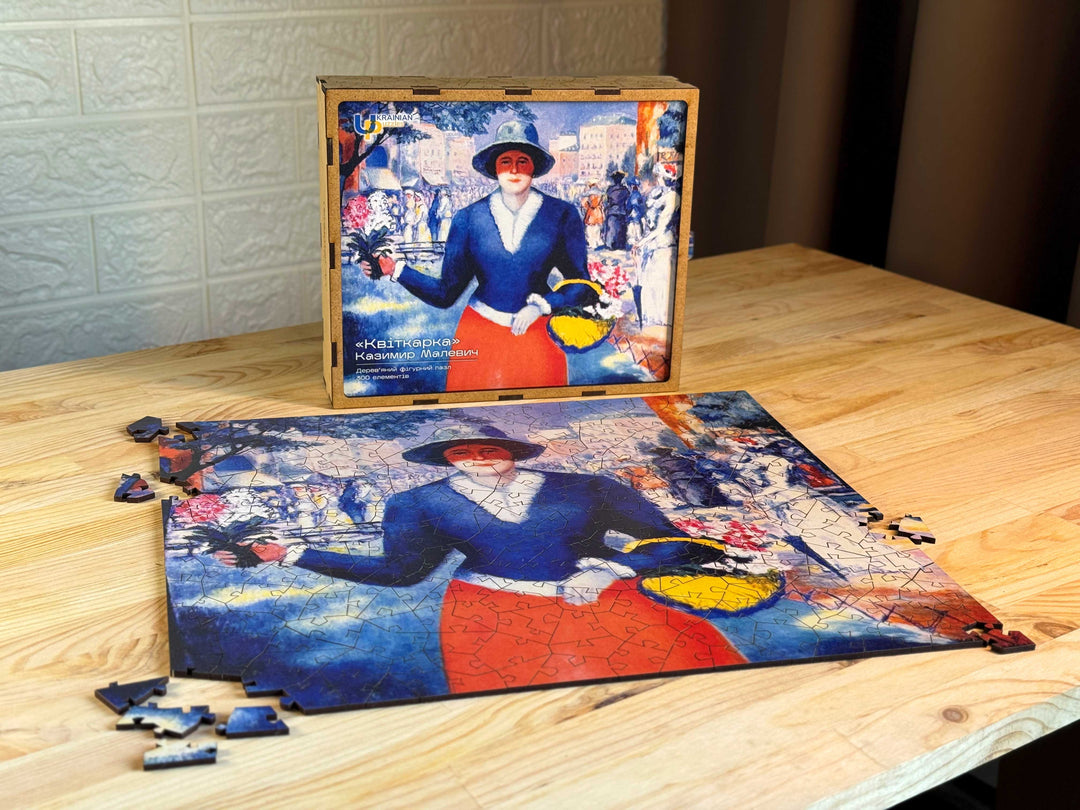
Taking into account that several countries claim Malevich as their artist, it should be noted that in his own autobiography, he called himself Ukrainian, and also listed his nationality as "Ukrainian" in interrogation questionnaires. Due to the long-standing dominance of the Russian/Soviet narrative regarding Eastern Europe, Kazymyr Malevich was overwhelmingly referred to as a Russian artist. Only now are some museums beginning to correct this error. For example, the Stedelijk Museum in Amsterdam, which holds one of the most complete collections of Kazymyr Malevich's works, now labels him as Ukrainian. The process of decolonizing the discourse regarding Ukrainian artists and culture still has a long way to go.
